10 Innovations Of 2023 That Allow Patients To Take Back Control
Over the past decade, smartphones have radically changed many aspects of our everyday lives, from banking to shopping to entertainment. 10 Innovations Of 2023 That Allow Patients To Take Back Control
Medicine is next. With innovative digital technologies, cloud computing and machine learning, the medicalized smartphone is going to upend every aspect of health care. And the end result will be that you, the patient, are about to take center stage for the first time.
Related:
The Skin’s Circadian Rhythm: Skin Hydration Ebbs And Flows By The Clock
The Complete Guide To The Science Of Circadian Rhythms
Ultimate Resource For News, Breakthroughs And Innovations In Healthcare
Chrono-Pharmacology Reveals That “When” You Take Your Medication Can Make A Life-Saving Difference
Medical Tourism AKA The Globalization Of Healthcare
As Suicide Rates Rise, Scientists Find New Warning Signs
Next Target for Hackers in 2022 Medical Data and Wireless Medical Devices
China Approves Use of Rhino, Tiger Parts For Medical Treatment And Research
Jarlsberg Cheese Offers Significant Bone & Heart-Health Benefits Thanks To Vitamin K2, Says Study
With the smartphone revolution, an increasingly powerful new set of tools—from attachments that can diagnose an ear infection or track heart rhythms to an app that can monitor mental health—can reduce our use of doctors, cut costs, speed up the pace of care and give more power to patients.
Digital avatars won’t replace physicians: You will still be seeing doctors, but the relationship will ultimately be radically altered. (I consult for several companies on many of the issues discussed here.)

All of this raises serious issues about hacking and personal privacy that haven’t yet been addressed—and the accuracy of all of these tools needs to be tested. People are also right to worry that the patient-doctor relationship could be eroded, diminishing the human touch in medicine. But the transformation is already under way.
Let’s say you have a rash that you need examined. Today, you can snap a picture of it with your smartphone and download an app to process the image. Within minutes, a dedicated computer algorithm can text you your diagnosis.
That message could include next steps, such as recommending a topical ointment or a visit to a dermatologist for further assessment.
Smartphones already can be used to take blood-pressure readings or even do an electrocardiogram. ECG apps have been approved by the U.S. Food and Drug Administration for consumers and validated in many clinical studies.
The apps’ data are immediately analyzed, graphed, displayed on-screen updated with new measurements, stored and (at an individual’s discretion) shared.
I thought I’d seen it all in my decadeslong practice as a cardiologist, but recently, for the first time, I had an ECG emailed to me by a patient, with the subject line, “I’m in atrial fib, now what do I do?” I immediately knew that the world had changed. The patient’s phone hadn’t just recorded the data; it had interpreted it.
Now, at any time of day or night, you can demand and get a secure video consultation with a doctor via smartphone at the same cost (about $30-$40) as the typical copay charge through employer health plans.
This may seem exotic now, but several large consulting firms—including Deloitte and PricewaterhouseCoopers—have forecast that virtual physician visits (replacing physical office visits) will soon become the norm.
Deloitte says that as many as one in six doctor visits were already virtual in 2014. In many U.S. cities, you can even use a mobile app to request a doctor’s house call during which a physician would not only provide a consultation but could even perform procedures, such as suturing a wound, which would have usually required an expensive emergency room visit.
Many surveys show that most consumers want to get information about the actual costs of their care from their doctors but can’t get it.
Going forward, what things cost will no longer be the great unmentionable hanging over medicine: Cost-transparency apps for your smartphone already exist and are quickly being expanded to cover lab tests, scans, procedures, hospitals and doctor visits.
Even bigger changes are in the works. Using wearable wireless sensors, you can use your smartphone to generate your own medical data, including measuring your blood-oxygen and glucose levels, blood pressure and heart rhythm.
And if you’re worried that your child may have an ear infection, a smartphone attachment will let you perform an easy eardrum exam that can rapidly diagnose the problem without a trip to the pediatrician.

These innovations are just the start. In the next year or two (depending on approval by the FDA), many Americans will probably start sporting wristwatches that continuously and passively capture their blood pressure and vital signs with every heartbeat, without even having to press a start button.
Such wristwatch sensors could do enormous good. By having the equivalent of intensive care unit monitoring on your wrist, hospital rooms—those $4,500-a-night risk zones for serious infections and other complications—can be replaced by our bedrooms.
As a result, except for ICUs, operating rooms and emergency rooms, hospitals of the future are likely to be roomless data surveillance centers for remote patient monitoring.
Other wearable sensor tools now being developed include necklaces that can monitor your heart function and check the amount of fluid in your lungs, contact lenses that can track your glucose levels or your eye pressure (to help manage glaucoma), and head bands that can capture your brain waves.
Someday, socks and shoes might analyze the human gait to, for instance, tell a Parkinson’s patient whether his or her medications are working or tell a caregiver whether an elderly family member is unsteady and at risk of falling.
We know that our health is highly influenced by our environment, which has been difficult to quantify. But smartphone sensors under development will be able to monitor your exposure to radiation, air pollution or pesticides in foods. And your medications could soon be digitized to provide you with reminders to ensure that you’ve taken them as prescribed.
It isn’t just hospitals’ rooms that are on their way out; so are their labs. Smartphone attachments will soon enable you to perform an array of routine lab tests via your phone.
Blood electrolytes; liver, kidney and thyroid function; analysis of breath, sweat and urine—all can be checked with small fluid samples in little labs that plug directly into smartphones. And you can do your own routine labs at a fraction of the current cost.
Smartphone selfies are all the rage, but smartphone physical exams are just taking off. The ability to make a definitive DIY diagnosis of an ear infection with a phone is just the first step. Apps are now being developed to handle all aspects of the eye, the throat and oral cavity, and the lungs and heart.
Meanwhile, nearly all sophisticated medical imaging devices are being miniaturized: Hand-held ultrasound devices are already available, and some medical schools have begun issuing them in the place of the old-school stethoscope.
Hand-held MRI (magnetic resonance imaging) machines aren’t far behind, and engineers at UCLA have come up with a smartphone-sized device that can generate X-rays. It won’t be long before you can take a smartphone X-ray selfie if you’re worried that you might have broken a bone.
In the next decade, you—under select circumstances, involving high risk or major medical need—will be able to monitor almost every organ system, no matter how difficult to access, as firms start to produce nanosensors to be embedded in your bloodstream.
These microscopic sensors within your body can float in blood or be fixed to a microstent in a tiny blood vessel. You’ll then be able to keep your blood under constant surveillance for the first appearance of cancer, autoimmune attacks on vital tissues or the tiny cracks in artery walls that can lead to heart attacks or strokes.
With all these new tools, it is no surprise that we’re talking about the possibility of “doctorless” medicine. Let’s not get too carried away. You’ll still be seeing doctors—but you’ll have a lot more control.
That change is badly overdue. Medicine has long been dominated by a priestly class, beginning with Imhotep, the first physician (and a priest), in Egypt some 4,600 years ago.
Things had hardly changed two millennia later when Hippocrates, widely considered the father of medicine, held that most medical information should be concealed from patients.
Hippocrates’s paternalistic sentiments survive today in our culture’s pervasive sense that “doctor knows best.” Physicians obviously tend to think so, but that sentiment is also powerfully reinforced by the top-down way medical information flows (or clogs).
The vast majority of doctors are unwilling to email patients or share their office notes. Getting a copy of a report after lab tests or medical scans seems impossible—and don’t even think about getting the results or images themselves. That is all about to change.
We’re often told that the U.S. faces a big looming shortage of physicians. The expansion of DIY medical capabilities certainly challenges that notion: We may end up not having a physician shortage at all.
But one discipline already has an unequivocal dearth of health-care professionals: mental health, which is also the leading cause of disability in the U.S. and many other developed countries. Smartphones can be particularly helpful here.
New apps aim to quantify your state of mind by a composite of real-time data: tone and inflection of voice, facial expression, breathing pattern, heart rate, galvanic skin response, blood pressure, even the frequency and content of your emails and texts.
We may soon take an even bigger step forward, thanks to the unexpected advantages of virtual psychiatrists. Recent studies, including a paper by Gale Lucas and others published last year in the Journal of Computers in Human Behavior, have demonstrated that people are more willing to disclose their inner thoughts to a computer avatar or “virtual human” than a real one.
With machines working to quantify moods and even offering virtual counseling to help make up for our current profound shortage of mental health professionals, we can glimpse a new approach to improving mental health.
This is heady stuff—but this vision of medicine also raises some serious and reasonable concerns. Before these tools enter widespread use, they must all be validated through clinical trials and shown to not only preserve health but to do so while lowering costs. Without such validation, the whole promise of digital medicine will be for naught.
Moreover, while we may find cases in which it is easier to tell things to a digital avatar, we can’t rely on avatars as doctors, powered by DIY physical exams and lab tests alone.
These new high-tech tools can provide useful medical information directly, quickly and inexpensively to consumers. But physical visits with doctors will never be replaced for important, serious matters that require face-to-face conversations—and no keyboards.
Even as we’re making great strides in capturing personal medical information, we’re way behind in dealing with the data deluge. We’ve done far too little to protect our precious personal health data’s privacy, stop it from being sold to third parties or secure it from hacking.
We’re also pathetic at data analytics: We tend to hoard big data and have done relatively little to extract meaningful information from it. To make matters even more complicated, none of the new patient-generated data—from sensors, lab tests, self-exams, DNA sequencing or auto-imaging—is flowing into the traditional hospital- or doctor-owned electronic health records.
I think all these problems can be managed, but it will take work. And these obstacles shouldn’t dissuade us from seizing the progress that is at hand.
The real revolution doesn’t come from having your own secure, in-depth medical data warehouse on your smartphone. It comes from the cloud, where we can combine all our individual data.
When that flood of data is properly assembled, integrated and analyzed, it will offer huge new potential at two levels—the individual and the population as a whole. Once all our relevant data are tracked and machine-processed to spot the complex trends and interactions that no one could detect alone, we’ll be able to pre-empt many illnesses.
Take Asthma Attacks. A teenager who’s prone to wheezing in gym class could get comprehensive data on environmental exposures such as air quality and pollen count, along with data on physical activity, oxygen concentration in the blood, vital signs and chest motion; their lung function can be assessed through their smartphone microphone, and their nitric-oxide levels can be sampled via their breath.
Then that information could be combined with the data from every other tracked asthma patient—and trigger a warning, delivered by text or voice message on the teenager’s phone, that an attack is imminent and tell the teenager which inhaler would prevent it.
The same type of procedure could prevent heart failure, seizures, severe depression and autoimmune disease attacks. It could save countless lives.
Finally, we simply cannot imagine what we’ll learn from the brave new world of open medicine: massive online information resources that pull together data from millions and eventually billions of individuals.
Think of Facebook’s ability to obtain social data from more than a billion people—but now imagine pulling together medical information never previously aggregated or even acquired.
A person who develops a new illness could use an open-medicine resource to find their nearest “neighbor”—the individual who most closely resembles their condition—to help determine the best treatment.
Putting hundreds of sensors into cars and providing exquisite computer navigational support didn’t just produce autonomous cars; it also made them safer than old-school, lower-tech cars driven by humans.
The same combination of sensors and computing power is about to do something similar to medicine—transforming it from a weakly evidence-based practice to a data science, with empowered individuals at center stage.
As more medical data is generated by patients and processed by computers, much of medicine’s diagnostic and monitoring aspects will shift away from physicians like me.
The “doctorless” patient will remain in charge, turning to doctors chiefly for treatment, guidance, wisdom, experience, empathy and the human touch. These doctors won’t write orders; they’ll offer advice.
Just as the printing press democratized information, the medicalized smartphone will democratize health care. Anywhere you can get a mobile signal, you’ll have new ways to practice data-driven medicine. Patients won’t just be empowered; they’ll be emancipated.
Even healthy people worry about the quality of care they can expect to receive when they become ill. Will a cancerous tumor be spotted early enough? Will hospital staff move fast enough to save my life? What is the worried-looking doctor scribbling in my chart?
Post-Traumatic Stress Disorder
Health-care innovations aren’t limited to drugs and devices. Experts
increasingly are adopting new ways to treat patients that studies show are better at healing the sick, preventing disease, improving patients’ quality of life and lowering costs.
Here Are 10 Innovations That Took Root In 2018 And Are Changing The Care Patients Will Get In 2023
Doctors Are Adopting a Better Bedside Manner
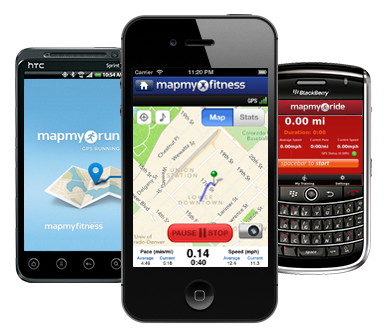
iMapMy I s a Fitness Tracking Application
Hospitals increasingly have a new focus: keeping patients happy. Surveys sent home after a hospital stay are asking patients to rate everything from whether nurses and doctors seemed attentive to their concerns to how clean their room was.
The institutions are putting doctors, nurses and other employees through customer-service training, hiring “patient experience” consultants and designating staff ombudsmen to handle complaints.
The moves follow prodding from Medicare, which now ties payments in part to how patients feel they were treated. The changes, though, benefit all patients.
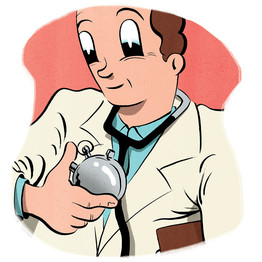
Heart Attacks Are Being Treated Faster
Ask Karen, An App That Offers Virtual Assistance And Tips On Preventing Foodborne Illness.
Speed is of the essence in surviving a heart attack, and in many cities now treatment starts before the patient reaches the hospital. Emergency medical technicians perform electrocardiograms and transmit results wirelessly to the emergency room.
New guidelines from the American Heart Association and the American College of Cardiology aim to quickly restore blood flow when an artery is blocked, the most severe type of attack known by the acronym STEMIGuidelines call for balloon
AIDS Info HIV/AIDS Glossary
angioplasty and stents as preferred treatments for STEMI , and clot-busting drugs as a stopgap measure. Also recommended: Chilling the patient in cases of cardiac arrest, a practice that reduces subsequent brain injury.
In new research, survival rates were higher among cardiac-arrest patients who received CPR longer–a median of 25 minutes versus 16 minutes. For patients, the message is: Don’t delay calling 911 when you have symptoms, and avoid going to the hospital in a private car.

ERs Are Getting Better at Handling Medical Mysteries
Wireless Information System for Emergency Responders (WISER): Identifies Hazardous Substances During An Emergency.
A growing number of hospital emergency rooms are opening observation units to keep an eye on patients who show up with complaints that can’t be quickly or conclusively diagnosed.
This reduces crowding in harried ERs. It also allows emergency staff to closely monitor at-risk patients and conduct tests more quickly and cheaply than by admitting them as an inpatient to a hospital room.

You Can Finally See What Your Doctor is Writing About You
Patients who have access to the notes their doctor makes about them are more likely to understand their health issues, recall what the doctor told them, and take medications as prescribed,
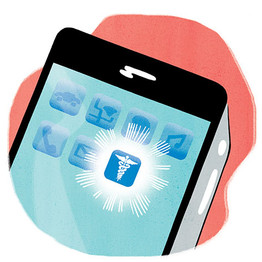
according to a trial program called Open Notes initiated by several big hospitals and now spreading across the country. Although patients have the right to view doctors’ notes, these often aren’t included in patient requests for medical records and doctors don’t make it easy to see them.
In the Open Notes trial, some patients picked up errors.
Other patients became more diligent about follow-up actions that eliminated the need for additional office visits, says Thomas Delbanco , a physician at Beth Israel Deaconess in Boston and lead investigator of the study.
Health Apps Are More Sophisticated
Rather than just count calories and monitor exercise, new apps take on more serious concerns. “Is it Contagious?” from the Nemours Foundation has information on some 85 childhood infections and conditions, including info on when to seek immediate medical care.
An app from the Centers for Disease Control and Prevention enables searches of health information. Carolinas Medical Center has an app to calculate the risk of pain and discomfort after hernia surgery. MyIBD , from Toronto’s Hospital for Sick Children helps those with irritable bowel disease track symptoms and food intake. The nonprofit Pew Research Center says some 19% of smartphone users have at least one health app on their device.
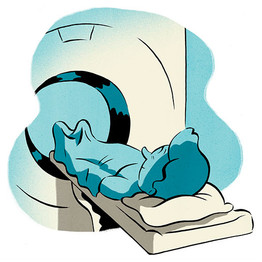
Tests for Colon Cancer Are Less Arduous
Colonoscopy is the gold standard for detecting colon cancer. Yet millions of people who should have one don’t, whether out of distaste for the laxative prep regimen or fear of the procedure. Alternatives include a “virtual” colonoscopy, using CT scanning to examine the colon.
A new version of the fecal occult blood test analyzes stool samples gathered at home to find polyps, abnormal growths that can become cancerous. Randomized controlled trials have shown the technique reduces colon cancer death rates.
Kaiser Permanente mails test kits to its Northern California patients and gets 3,000 samples a day. If test results are positive, colonoscopy is advised.
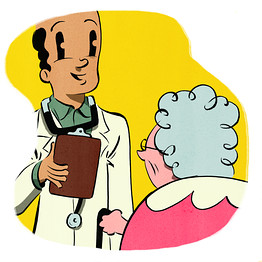
Talk of Dying Gets a Little Less Daunting
Families and patients are getting help with one of the most difficult care decisions: When to stop invasive and costly treatments and focus on a dignified and comfortable pathway to the end of life.
A program known as POLST–Physician Orders for Life-Sustaining Treatment –has been adopted in a growing number of states.
It offers a template doctors and patients can use to discuss and record which types of care patients want and which they would rather forgo. Another program, the Conversation Project , created by writer Ellen Goodman , is a way to help people talk about these issues with loved ones around the kitchen table.
A starter kit, available free online, helps map out how to think about what matters most, such as being able to recognize family members, and how to talk to family about tough care decisions.

The Hospital Is Less Likely To Make You Sick
The problem of hospital patients who contract potentially fatal infections has dogged providers for years. Medicare has stopped paying to treat some infections acquired in the hospital.
A breakthrough came in September with news that a program in 1,100 intensive care units in 44 states reduced the rate of a deadly hospital bloodstream infection by 40% over four years.
The iPhone And iPad App Provides Real-Time Information On Air Quality..
The remedy seems simple: Doctors and staffers follow a checklist of routine precautions, including washing hands and removing catheters from patients as soon as possible.
Peter Pronovost , the Johns Hopkins patient safety expert who oversaw the program, estimated it has saved more than 500 lives and $34 million and will lead to more programs to reduce harm.

Robots Are Helping Your Surgeon
In a growing number of medical schools and hospitals, trainees and staff are learning procedures on lifelike electronic robots that bleed, have seizures, and give birth–all while simulating emergency complications that require c are providers practice critical thinking and decision-making under pressure, “without risking the well-being of actual patients,” says George Halvorson , outgoing chief executive of Kaiser Permanente.
A robot named Noelle
can simulate a birth emergency while the multitalented SimMan

has the ability to present realistic human responses to heart attack, stroke or respiratory distress. Studies show that simulation leads to enhanced teamwork and crisis-management skills of health-care providers.
Check The UV Index And Air Quality Ratings Wherever You Are
Vetting A Hospital Gets Easier
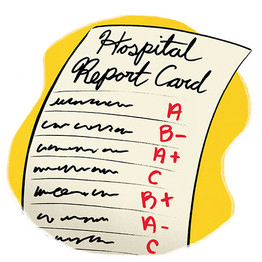
Data on hospital quality and safety has been available online for some time, but not in a very user-friendly way. This year, the Leapfrog Group , a coalition of public and private purchasers of employee health coverage, graded hospitals, from A to F, based on measures of patient safety.
Some hospitals got poor grades and took issue with the methodology, which was subsequently altered slightly. Leapfrog CEO Leah Binder says it is “the toughest standard-bearer and provides the most complete picture of a hospital’s quality and safety.”
Breathe2Relax Helps With Mood Stabilization, Anger Control, And Anxiety Management.
The list of 1,200 hospitals, released Dec. 4, ranks only 89 of them as top facilities. Patients can use a free website or a mobile app to compare hospitals based on overall safety or based on selected procedures such as heart bypass surgery. A research team at Johns Hopkins’ Armstrong Institute for Patient Safety and Quality will provide scientific guidance in future.
The Future of Medicine Is Now
In our era of instant gratification, the world of medicine seems like an outlier. The path from a promising discovery to an effective treatment often takes a decade or more.
But from that process–of fits and starts, progress and setbacks and finally more progress–grow the insights and advances that change the course of medicine.
A decade ago, the completion of the Human Genome Project sparked optimism that cures for debilitating diseases were just around the corner.
Cures still generally elude us, but now the ability to map human DNA cheaply and quickly is yielding a torrent of data about the genetic drivers of disease–and a steady stream of patients who are benefiting from the knowledge.
On other fronts, technology is putting more power in the hands of patients, and researchers are learning to combat disorders by harnessing the body’s own ability to heal and grow.

Foundation Medicine
A test developed by Foundation Medicine Inc. analyzes tumor DNA to help find targeted treatment options for patients with cancer.
Advances bring other challenges, including how to pay for them. Meanwhile, the complex biology that stymies gains for some patients sets goals for new advances.
Here Are Six of Today’s Potentially Transformative Trends:
Growing a Heart
Surgeons at Boston Children’s Hospital have developed a way to help children born with half a heart to essentially grow a whole one–by marshaling the body’s natural capacity to heal and develop.
About 1,000 babies are born in the U.S. each year with a condition called hypoplastic left-heart syndrome, the result of a genetic anomaly that leaves them without a functioning left ventricle, the heart’s main pumping chamber. Without a surgical repair, the defect is almost always fatal.
A new surgical strategy helped 9-year-old Alexa Rand’s body to essentially grow half a heart into a whole one.

The standard treatment is a series of three open-heart operations to reroute circulation so that the right ventricle can take over pumping blood to the body’s organs and extremities. But the right ventricle “is meant to handle low-pressure blood flow to the lungs,” says Sitaram Emani, the surgeon heading the effort on the new approach.
“Now you’re asking it to do the work of a high-pressure system and to do that work for many years. Eventually it fails.” That’s one reason why 30% of patients or more don’t survive to adulthood.
Dr. Emani and his colleagues devised a complex strategy to open obstructed valves and repair other malformations to direct blood flow to the left ventricle instead of away from it. That triggers biological processes that promote the heart’s growth.
Last month, after using the approach on 34 carefully selected patients over the past decade, the doctors reported in the Journal of the American College of Cardiology that 12 now have two working ventricles.
One of them, 9-year-old Alexa Rand of Kings Park , N.Y. , whose treatments began in utero, is thriving. She sings, dances and surprises doctors with how long she can walk on a treadmill, says her mother, Rosamaria Rand.
The main drawback: The strategy requires one more surgical procedure, on average, and significantly more days in the hospital than the conventional surgery. The hope is, Dr. Emani says, that the long-term benefits will outweigh the extra hospital time.
DNA Sequencing for Routine Checkups
At a genetics conference in November, Oxford Nanopore Technologies unveiled the first of a generation of tiny DNA sequencing devices that many predict will eventually be as ubiquitous as cellphones–it’s already the size of one.
Since the first sequencing of the human genome was completed in 2003 at a price tag of over $2 billion, the speed, price and accuracy of the technology have all improved. Illumina Inc. has dropped its price for individual readouts to $5,000; earlier this year, Life Technologies introduced a sequencer it says can map the human genome for $1,000. The smallest machine is now desktop-size.
But nanopore sequencing devices, which are designed to be even smaller and more affordable, could speed efforts to make gene sequencing a routine part of a visit to the doctor’s office. DNA molecules are exceedingly long and complicated; that makes them hard to read.
Nanopore technology measures changes in the molecules’ electrical current as the DNA is threaded in a single strand through tiny holes called “nanopores” created in a membrane.
So far, U.K.-based Oxford has released the results of sequencing a virus genome with this technique. The company hasn’t provided data, however, showing that the sequencers can analyze the much larger human genome.
A spokeswoman for Oxford says the company is working hard toward being able to sell devices, including one that is expected to cost under $1,000, though it doesn’t yet have a launch date.
Amit Meller–an associate professor at Boston University, a scientific adviser at Oxford and the co-founder of Noblegen Biosciences–is at work on another nanopore device that he says would use fluorescent signals to read the DNA information.
His company is still a number of years away from a prototype, but Dr. Meller says the goal is to speed up sequencing even more–with results in a few hours, not the current weeks or days, at a cost of less than $100.
Matching A Tumor To A Drug
Our growing understanding of the workings of the human genome is posing a new challenge: How to use that data to change the course of disease.
Consider cancer. As seen through a gene-sequencing machine, some cancers can appear as at least a dozen different genetic diseases, some of which have been shown to respond uniquely to a specific drug. But how do cancer doctors quickly match a patient’s tumor with a drug that targets it?
One answer is a test developed by Foundation Medicine Inc., a Cambridge , Mass. , startup whose scientific founders include one of the leaders of the Human Genome Project. The test, officially launched last June, enables doctors to test a tumor sample for 280 different genetic mutations suspected of driving tumor growth.
This changes “everything in terms of how we approach patients with cancer,” says David Spigel, director of lung-cancer research at the Sarah Cannon Research Institute in Nashville , Tenn. He used the test in one patient with advanced disease and few apparent options.
She turned out positive for an alteration in a gene targeted by several drugs currently in development. She was signed up for one of the studies. A short time later, “she’s like a new person,” he says. “She’s off pain medicines. She gained her weight back.”
Michael Pellini, Foundation’s chief executive officer, says that more than 600 oncologists have requested the test, which lists for $5,800. So far, he says, about 70% of cases have turned up a mutation that is potentially targeted by a drug on the market or in a clinical trial.
In one recent case, Dr. Pellini says, a sample from a woman with advanced pancreatic cancer yielded a response for “her2,” an alteration associated with a certain form of breast cancer.
She was treated and her cancer responded to the breast-cancer drug Herceptin. Few oncologists would think to look for her2 in a patient with pancreatic cancer, he says.
Letting Your Body Fight Cancer
Few advances in cancer care are generating more enthusiasm than harnessing the power of the immune system to fight the disease.
Tom Stutz is one reason why. Last April, the 72-year-old retired lawyer was confined to a wheelchair, struggling for every breath, and required help with simple tasks such as eating, all because of a previously diagnosed skin cancer that had spread to his lungs and liver. “I was ready to check out, to be honest,” he says.
That month, he began taking an experimental drug known as MK3475. Six weeks later, he started feeling better. Today, Mr. Stutz has jettisoned the wheelchair and regularly walks a 3.5-mile loop near his home in Los Angeles . “I feel terrific,” says Mr. Stutz, who learned after a checkup in the fall that his tumors had shrunk by about 65% so far.
For decades, cancer researchers have wondered why the immune system typically doesn’t treat tumor cells as invaders and target them. Part of the mystery was recently solved: Tumors protect themselves by hijacking the body’s natural brake for the immune system.
MK3475, being developed by Merck and Co., is among a new category of drugs that release the brake, unleashing an army of immune cells to hunt down the cancer. A recent report from a trial in which Mr. Stutz participated said that of 85 patients who took the drug, 51% saw their tumors significantly shrink; in eight cases, the tumors couldn’t be detected on imaging tests.
Still, not everyone was helped. And unleashing the immune system can put normal cells in harm’s way: In studies of MK3745 and similar drugs, some patients developed serious side effects related to immune-system response, including a small number who died.
But interest in the approach is strong. Bristol-Myers Squibb Corp.’s drug Yervoy, approved by the Food and Drug Administration in 2011, is the first of its kind to reach the market. The company has others in development. GlaxoSmithKline PLC and AstraZeneca‘ s MedImmune are among others exploring ways to activate the immune system against cancer.
One reason for the excitement is that most “solid” tumors–colon, lung, breast, prostate–use the same or a similar mechanism to hide from the immune system. Obstructing that mechanism may have a broad impact across a variety of malignancies.
Health in the Palm of Your Hand
There’s a good chance that you already own one of the most ubiquitous health-care innovations: a smartphone. Last month, the FDA cleared a new iPhone add-on that lets doctors take an electrocardiogram just about anywhere.
Other smartphone apps help radiologists read medical images and allow patients to track moles for signs of skin cancer.
“I see the smartphone as one piece of how we’re going to try to get health costs under control,” says David Albert, the Oklahoma City-based inventor of the just-approved AliveCor electrocardiogram application.
At $199, AliveCor consists of a case that snaps onto the iPhone, with electrodes on the back. It reads heart rhythms and relays the recording to an iPhone app, allowing physicians to read the data. Dr. Albert says a $99 version should be available soon that will let patients capture their own heart data, documenting sometimes-fleeting arrhythmias when they feel symptoms or tracking the success of lifestyle changes at curbing heart troubles.
Doctors say that mainstream EKG machines provide more information but the iPhone version is sufficient for many diagnostic needs. “When I go to [the] clinic, I use it in place of an EKG all the time,” says Leslie Saxon, chief of the University of Southern California ‘s heart-rhythm department, which has conducted research using AliveCor’s device.
The FDA has cleared a handful of apps, beginning with an iPad- and iPhone-based medical imaging reader in 2011. The smartphone lets us “bring health care into the home,” says Erik Douglas, CEO of CellScope.
His company is developing an iPhone-based otoscope that would allow parents to upload images of the inside of children’s ears when they show signs of infections, with the aim of avoiding unnecessary doctors visits.
Rejigging Your Genes
After years of controversy, gene therapy is poised to become a viable option for a variety of often life-threatening medical conditions, especially those resulting from a single defective gene.
Last month, the European Union approved Glybera for treatment of a rare genetic disease, making it the first gene-therapy medicine approved in the Western world.
The approval comes amid a flurry of research showing broader promise for the approach in a range of disorders, from a rare form of blindness to hemophilia to heart failure.
Though outright cures are still elusive, gene therapy “is beginning to emerge as a meaningful clinical” strategy, says Stephen J. Russell, director of molecular medicine at the Mayo Clinic in Rochester , Minn.
Gene therapy’s tantalizing attraction is that a single treatment has the potential to cure lethal diseases by enabling normal genes to take over for defective ones.
The treatment involves loading a functional gene onto a fragment of a deactivated virus that transports the gene to a cell’s nucleus, where it is intended to take over.
The idea suffered major setbacks in 1999 when a U.S. teenager died in a gene-therapy trial and again soon after when several children in Europe developed leukemia after receiving gene therapy.
The episodes prompted criticism that researchers had moved too quickly. Scientists returned to the laboratory, hoping to develop better delivery vehicles and to improve both the safety and efficacy of the treatments.
Bluebird Bio, a Cambridge, Mass., gene-therapy startup, expects to launch studies next year for two rare genetic diseases: childhood adrenoleukodystrophy, or ALD, an inherited and lethal neurological disorder; and beta thallasemia, which causes the destruction of red blood cells and leads to life-threatening anemia.
Its technique involves extracting a patient’s own bone-marrow cells, isolating certain stem cells, and delivering the gene therapy before returning the cells to the body.
Four boys in Paris with ALD have been successfully treated, says Nick Leschly, Bluebird’s president and chief executive officer, including two treated nearly six years ago. They are now in their teens and would otherwise likely have died before age 10, he says.
Other gene-therapy efforts include Novartis SA’s partnership with the University of Pennsylvania on a treatment for cancer, GlaxoSmithKline’s alliance with Italian scientists for a range of disorders, and Celedon Corp.’s clinical trial of a gene therapy in patients with advanced heart failure.
Additional Resources:
* The Benefits of Grounding or Earthing For Improved Health (Dramatically Reduces Inflammation)
Mobile Health Apps Worth A Closer Look:
Medscape Mobile: Professional Medical Website, Which Offers News, Full-Text Journal Articles, CME, And Reference Material
Sermo: Popular Doctor-To-Doctor Social Network Website
MIM Mobile: A Remote Diagnostic Imaging Tool For The iPad, iPhone, And iPod Touch. Intended For Medical Professionals, It’s The first App Of Its Kind To Receive FDA 510K Clearance.
ICD 10 Premium 2013: Aimed At Healthcare Pros, This App Lets Users Access The Complete Details For ICD 10 Diagnostic Codes.
EMS Video Consult: Allows Healthcare Practitioners To View Live Medical Consultations From Anywhere Using A Smartphone.
QuantiaMD: Free Online And Mobile Application Designed To Address Clinicians’ Educational Needs.
Related Articles:
Bitcoin Information & Resources (#GotBitcoin)
Chrono-Pharmacology Reveals That “When” You Take Your Medication Can Make A Life-Saving Difference
Ultimate Resource For News, Breakthroughs And Innovations In Healthcare
Ultimate Resource For Cooks, Chefs And The Latest Food Trends
Ethereum Use Cases You Might Not Know
Will 1% Yield Force The Fed Into Curve Control?
Ultimate Resource On Hong Kong Vying For World’s Crypto Hub #GotBitcoin
France Moves To Ban Anonymous Crypto Accounts To Prevent Money Laundering
Numerous Times That US (And Other) Regulators Stepped Into Crypto
Where Does This 28% Bitcoin Price Drop Rank In History? Not Even In The Top 5
Traditional Investors View Bitcoin As If It Were A Technology Stock
3 Reasons Why Bitcoin Price Abruptly Dropped 6% After Reaching $15,800
As Bitcoin Approaches $25,000 It Breaks Correlation With Equities
UK Treasury Calls For Feedback On Approach To Cryptocurrency And Stablecoin Regulation
Bitcoin Rebounds While Leaving Everyone In Dark On True Worth
Slow-Twitch vs. Fast-Twitch Muscle Fibers
Biden, Obama Release Campaign Video Applauding Their Achievements
Joe Biden Tops Donald Trump In Polls And Leads In Fundraising (#GotBitcoin)
Trump Gets KPOP’d And Tic Toc’d As Teens Mobilized To Derail Trump’s Tulsa Rally
Schwab’s $200 Million Charge Puts Scrutiny On Robo-Advising
TikTok Is The Place To Go For Financial Advice If You’re A Young Adult
TikTok Is The Place To Go For Financial Advice If You’re A Young Adult
American Shoppers Just Can’t Pass Up A Bargain And Department Stores Pay The Price #GotBitcoin
Motley Fool Adding $5M In Bitcoin To Its ‘10X Portfolio’ — Has A $500K Price Target
Mad Money’s Jim Cramer Invests 1% Of Net Worth In Bitcoin Says, “Gold Is Dangerous”
Ultimate Resource For Financial Advisers By Financial Advisers On Crypto
Anti-ESG Movement Reveals How Blackrock Pulls-off World’s Largest Ponzi Scheme
The Bitcoin Ordinals Protocol Has Caused A Resurgence In Bitcoin Development And Interest
Bitcoin Takes ‘Lion’s Share’ As Institutional Inflows Hit 7-Month High
Bitcoin’s Future Depends On A Handful of Mysterious Coders
Billionaire Hedge Fund Investor Stanley Druckenmiller Says He Owns Bitcoin In CNBC Interview
Bitcoin Billionaire Chamath Palihapitiya Opts Out Of Run For California Governor
Billionaire Took Psychedelics, Got Bitcoin And Is Now Into SPACs
Billionaire’s Bitcoin Dream Shapes His Business Empire In Norway
Trading Firm Of Richest Crypto Billionaire Reveals Buying ‘A Lot More’ Bitcoin Below $30K
Simple Tips To Ensure Your Digital Surveillance Works As It Should
Big (4) Audit Firms Blasted By PCAOB And Gary Gensler, Head Of SEC (#GotBitcoin)
What Crypto Users Need Know About Changes At The SEC
The Ultimate Resource For The Bitcoin Miner And The Mining Industry (Page#2) #GotBitcoin
How Cryptocurrency Can Help In Paying Universal Basic Income (#GotBitcoin)
Gautam Adani Was Briefly World’s Richest Man Only To Be Brought Down By An American Short-Seller
Global Crypto Industry Pledges Aid To Turkey Following Deadly Earthquakes
Money Supply Growth Went Negative Again In December Another Sign Of Recession #GotBitcoin
Here Is How To Tell The Difference Between Bitcoin And Ethereum
Crypto Investors Can Purchase Bankruptcy ‘Put Options’ To Protect Funds On Binance, Coinbase, Kraken
Bitcoin Developers Must Face UK Trial Over Lost Cryptoassets
Google Issues Warning For 2 Billion Chrome Users
How A Lawsuit Against The IRS Is Trying To Expand Privacy For Crypto Users
IRS Uses Cellphone Location Data To Find Suspects
IRS Failed To Collect $2.4 Billion In Taxes From Millionaires
Treasury Calls For Crypto Transfers Over $10,000 To Be Reported To IRS
Can The IRS Be Trusted With Your Data?
US Ransomware Attack Suspect Hails From A Small Ukrainian Town
Alibaba Admits It Was Slow To Report Software Bug After Beijing Rebuke
Japan Defense Ministry Finds Security Threat In Hack
Raoul Pal Believes Institutions Have Finished Taking Profits As Year Winds Up
Yosemite Is Forcing Native American Homeowners To Leave Without Compensation. Here’s Why
What Is Dollar Cost Averaging Bitcoin?
Ultimate Resource On Bitcoin Unit Bias
Best Travel Credit Cards of 2022-2023
A Guarded Generation: How Millennials View Money And Investing (#GotBitcoin)
Bitcoin Enthusiast And CEO Brian Armstrong Buys Los Angeles Home For $133 Million
Nasdaq-Listed Blockchain Firm BTCS To Offer Dividend In Bitcoin; Shares Surge
Ultimate Resource On Kazakhstan As Second In Bitcoin Mining Hash Rate In The World After US
Ultimate Resource On Solana Outages And DDoS Attacks
How Jessica Simpson Almost Lost Her Name And Her Billion Dollar Empire
Sidney Poitier, Actor Who Made Oscars History, Dies At 94
Green Comet Will Be Visible As It Passes By Earth For First Time In 50,000 Years
FTX (SBF) Got Approval From F.D.I.C., State Regulators And Federal Reserve To Buy Tiny Bank!!!
Joe Rogan: I Have A Lot Of Hope For Bitcoin
Teen Cyber Prodigy Stumbled Onto Flaw Letting Him Hijack Teslas
Spyware Finally Got Scary Enough To Freak Lawmakers Out—After It Spied On Them
The First Nuclear-Powered Bitcoin Mine Is Here. Maybe It Can Clean Up Energy FUD
The World’s Best Crypto Policies: How They Do It In 37 Nations
Tonga To Copy El Salvador’s Bill Making Bitcoin Legal Tender, Says Former MP
Wordle Is The New “Lingo” Turning Fans Into Argumentative Strategy Nerds
Prospering In The Pandemic, Some Feel Financial Guilt And Gratitude
Is Art Therapy The Path To Mental Well-Being?
New York, California, New Jersey, And Alabama Move To Ban ‘Forever Chemicals’ In Firefighting Foam
The Mystery Of The Wasting House-Cats
What Pet Owners Should Know About Chronic Kidney Disease In Dogs And Cats
Pets Score Company Perks As The ‘New Dependents’
Why Is My Cat Rubbing His Face In Ants?
Natural Cure For Hyperthyroidism In Cats Including How To Switch Him/Her To A Raw Food Diet
Ultimate Resource For Cat Lovers
FDA Approves First-Ever Arthritis Pain Management Drug For Cats
Ultimate Resource On Duke of York’s Prince Andrew And His Sex Scandal
Walmart Filings Reveal Plans To Create Cryptocurrency, NFTs
Bitcoin’s Dominance of Crypto Payments Is Starting To Erode
T-Mobile Says Hackers Stole Data On About 37 Million Customers
Jack Dorsey Announces Bitcoin Legal Defense Fund
More Than 100 Millionaires Signed An Open Letter Asking To Be Taxed More Heavily
Federal Regulator Says Credit Unions Can Partner With Crypto Providers
What’s Behind The Fascination With Smash-And-Grab Shoplifting?
Train Robberies Are A Problem In Los Angeles, And No One Agrees On How To Stop Them
US Stocks Historically Deliver Strong Gains In Fed Hike Cycles (GotBitcoin)
Ian Alexander Jr., Only Child of Regina King, Dies At Age 26
Amazon Ends Its Charity Donation Program Amazonsmile After Other Cost-Cutting Efforts
Indexing Is Coming To Crypto Funds Via Decentralized Exchanges
Doctors Show Implicit Bias Towards Black Patients
Darkmail Pushes Privacy Into The Hands Of NSA-Weary Customers
3D Printing Make Anything From Candy Bars To Hand Guns
Stealing The Blood Of The Young May Make You More Youthful
Henrietta Lacks And Her Remarkable Cells Will Finally See Some Payback
AL_A Wins Approval For World’s First Magnetized Fusion Power Plant
Want To Be Rich? Bitcoin’s Limited Supply Cap Means You Only Need 0.01 BTC
Smart Money Is Buying Bitcoin Dip. Stocks, Not So Much
McDonald’s Jumps On Bitcoin Memewagon, Crypto Twitter Responds
America COMPETES Act Would Be Disastrous For Bitcoin Cryptocurrency And More
Lyn Alden On Bitcoin, Inflation And The Potential Coming Energy Shock
Inflation And A Tale of Cantillionaires
El Salvador Plans Bill To Adopt Bitcoin As Legal Tender
Miami Mayor Says City Employees Should Be Able To Take Their Salaries In Bitcoin
Vast Troves of Classified Info Undermine National Security, Spy Chief Says
BREAKING: Arizona State Senator Introduces Bill To Make Bitcoin Legal Tender
San Francisco’s Historic Surveillance Law May Get Watered Down
How Bitcoin Contributions Funded A $1.4M Solar Installation In Zimbabwe
California Lawmaker Says National Privacy Law Is a Priority
The Pandemic Turbocharged Online Privacy Concerns
How To Protect Your Online Privacy While Working From Home
Researchers Use GPU Fingerprinting To Track Users Online
Japan’s $1 Trillion Crypto Market May Ease Onerous Listing Rules
Ultimate Resource On A Weak / Strong Dollar’s Impact On Bitcoin
Fed Money Printer Goes Into Reverse (Quantitative Tightening): What Does It Mean For Crypto?
Crypto Market Is Closer To A Bottom Than Stocks (#GotBitcoin)
When World’s Central Banks Get It Wrong, Guess Who Pays The Price😂😹🤣 (#GotBitcoin)
“Better Days Ahead With Crypto Deleveraging Coming To An End” — Joker
Crypto Funds Have Seen Record Investment Inflow In Recent Weeks
Bitcoin’s Epic Run Is Winning More Attention On Wall Street
Ultimate Resource For Crypto Mergers And Acquisitions (M&A) (#GotBitcoin)
Why Wall Street Is Literally Salivating Over Bitcoin
Nasdaq-Listed MicroStrategy And Others Wary Of Looming Dollar Inflation, Turns To Bitcoin And Gold
Bitcoin For Corporations | Michael Saylor | Bitcoin Corporate Strategy
Ultimate Resource On Myanmar’s Involvement With Crypto-Currencies
‘I Cry Every Day’: Olympic Athletes Slam Food, COVID Tests And Conditions In Beijing
Does Your Baby’s Food Contain Toxic Metals? Here’s What Our Investigation Found
Ultimate Resource For Pro-Crypto Lobbying And Non-Profit Organizations
Ultimate Resource On BlockFi, Celsius And Nexo
Petition Calling For Resignation Of U.S. Securities/Exchange Commission Chair Gary Gensler
100 Million Americans Can Legally Bet on the Super Bowl. A Spot Bitcoin ETF? Forget About it!
Green Finance Isn’t Going Where It’s Needed
Shedding Some Light On The Murky World Of ESG Metrics
SEC Targets Greenwashers To Bring Law And Order To ESG
BlackRock (Assets Under Management $7.4 Trillion) CEO: Bitcoin Has Caught Our Attention
Canada’s Major Banks Go Offline In Mysterious (Bank Run?) Hours-Long Outage (#GotBitcoin)
On-Chain Data: A Framework To Evaluate Bitcoin
On Its 14th Birthday, Bitcoin’s 1,690,706,971% Gain Looks Kind of… Well Insane
The Most Important Health Metric Is Now At Your Fingertips
American Bargain Hunters Flock To A New Online Platform Forged In China
Why We Should Welcome Another Crypto Winter
Traders Prefer Gold, Fiat Safe Havens Over Bitcoin As Russia Goes To War
Music Distributor DistroKid Raises Money At $1.3 Billion Valuation
Nas Selling Rights To Two Songs Via Crypto Music Startup Royal
Ultimate Resource On Music Catalog Deals
Ultimate Resource On Music And NFTs And The Implications For The Entertainment Industry
Lead And Cadmium Could Be In Your Dark Chocolate
Catawba, Native-American Tribe Approves First Digital Economic Zone In The United States
The Miracle Of Blockchain’s Triple Entry Accounting
How And Why To Stimulate Your Vagus Nerve!
Housing Boom Brings A Shortage Of Land To Build New Homes
Biden Lays Out His Blueprint For Fair Housing
No Grave Dancing For Sam Zell Now. He’s Paying Up For Hot Properties
Cracks In The Housing Market Are Starting To Show
Ever-Growing Needs Strain U.S. Food Bank Operations
Food Pantry Helps Columbia Students Struggling To Pay Bills
Food Insecurity Driven By Climate Change Has Central Americans Fleeing To The U.S.
Housing Insecurity Is Now A Concern In Addition To Food Insecurity
Families Face Massive Food Insecurity Levels
US Troops Going Hungry (Food Insecurity) Is A National Disgrace
Everything You Should Know About Community Fridges, From Volunteering To Starting Your Own
Russia’s Independent Journalists Including Those Who Revealed The Pandora Papers Need Your Help
10 Women Who Used Crypto To Make A Difference In 2021
Happy International Women’s Day! Leaders Share Their Experiences In Crypto
Dollar On Course For Worst Performance In Over A Decade (#GotBitcoin)
Juice The Stock Market And Destroy The Dollar!! (#GotBitcoin)
Unusual Side Hustles You May Not Have Thought Of
Ultimate Resource On Global Inflation And Rising Interest Rates (#GotBitcoin)
The Fed Is Setting The Stage For Hyper-Inflation Of The Dollar (#GotBitcoin)
An Antidote To Inflation? ‘Buy Nothing’ Groups Gain Popularity
Why Is Bitcoin Dropping If It’s An ‘Inflation Hedge’?
Lyn Alden Talks Bitcoin, Inflation And The Potential Coming Energy Shock
Ultimate Resource On How Black Families Can Fight Against Rising Inflation (#GotBitcoin)
What The Fed’s Rate Hike Means For Inflation, Housing, Crypto And Stocks
Egyptians Buy Bitcoin Despite Prohibitive New Banking Laws
Archaeologists Uncover Five Tombs In Egypt’s Saqqara Necropolis
History of Alchemy From Ancient Egypt To Modern Times
Former World Bank Chief Didn’t Act On Warnings Of Sexual Harassment
Does Your Hospital or Doctor Have A Financial Relationship With Big Pharma?
Ultimate Resource Covering The Crisis Taking Place In The Nickel Market
Apple Along With Meta And Secret Service Agents Fooled By Law Enforcement Impersonators
Handy Tech That Can Support Your Fitness Goals
How To Naturally Increase Your White Blood Cell Count
Ultimate Source For Russians Oligarchs And The Impact Of Sanctions On Them
Ultimate Source For Bitcoin Price Manipulation By Wall Street
Russia, Sri Lanka And Lebanon’s Defaults Could Be The First Of Many (#GotBitcoin)
Will Community Group Buying Work In The US?
Building And Running Businesses In The ‘Spirit Of Bitcoin’
What Is The Mysterious Liver Disease Hurting (And Killing) Children?
Citigroup Trader Is Scapegoat For Flash Crash In European Stocks (#GotBitcoin)
Bird Flu Outbreak Approaches Worst Ever In U.S. With 37 Million Animals Dead
Financial Inequality Grouped By Race For Blacks, Whites And Hispanics
How Black Businesses Can Prosper From Targeting A Trillion-Dollar Black Culture Market (#GotBitcoin)
Ultimate Resource For Central Bank Digital Currencies (#GotBitcoin) Page#2
Meet The Crypto Angel Investor Running For Congress In Nevada (#GotBitcoin?)
Introducing BTCPay Vault – Use Any Hardware Wallet With BTCPay And Its Full Node (#GotBitcoin?)
How Not To Lose Your Coins In 2020: Alternative Recovery Methods (#GotBitcoin?)
H.R.5635 – Virtual Currency Tax Fairness Act of 2020 ($200.00 Limit) 116th Congress (2019-2020)
Adam Back On Satoshi Emails, Privacy Concerns And Bitcoin’s Early Days
The Prospect of Using Bitcoin To Build A New International Monetary System Is Getting Real
How To Raise Funds For Australia Wildfire Relief Efforts (Using Bitcoin And/Or Fiat )
Former Regulator Known As ‘Crypto Dad’ To Launch Digital-Dollar Think Tank (#GotBitcoin?)
Currency ‘Cold War’ Takes Center Stage At Pre-Davos Crypto Confab (#GotBitcoin?)
A Blockchain-Secured Home Security Camera Won Innovation Awards At CES 2020 Las Vegas
Bitcoin’s Had A Sensational 11 Years (#GotBitcoin?)
Sergey Nazarov And The Creation Of A Decentralized Network Of Oracles
Google Suspends MetaMask From Its Play App Store, Citing “Deceptive Services”
Christmas Shopping: Where To Buy With Crypto This Festive Season
At 8,990,000% Gains, Bitcoin Dwarfs All Other Investments This Decade
Coinbase CEO Armstrong Wins Patent For Tech Allowing Users To Email Bitcoin
Bitcoin Has Got Society To Think About The Nature Of Money
How DeFi Goes Mainstream In 2020: Focus On Usability (#GotBitcoin?)
Dissidents And Activists Have A Lot To Gain From Bitcoin, If Only They Knew It (#GotBitcoin?)
At A Refugee Camp In Iraq, A 16-Year-Old Syrian Is Teaching Crypto Basics
Bitclub Scheme Busted In The US, Promising High Returns From Mining
Bitcoin Advertised On French National TV
Germany: New Proposed Law Would Legalize Banks Holding Bitcoin
How To Earn And Spend Bitcoin On Black Friday 2019
The Ultimate List of Bitcoin Developments And Accomplishments
Charities Put A Bitcoin Twist On Giving Tuesday
Family Offices Finally Accept The Benefits of Investing In Bitcoin
An Army Of Bitcoin Devs Is Battle-Testing Upgrades To Privacy And Scaling
Bitcoin ‘Carry Trade’ Can Net Annual Gains With Little Risk, Says PlanB
Max Keiser: Bitcoin’s ‘Self-Settlement’ Is A Revolution Against Dollar
Blockchain Can And Will Replace The IRS
China Seizes The Blockchain Opportunity. How Should The US Respond? (#GotBitcoin?)
Jack Dorsey: You Can Buy A Fraction Of Berkshire Stock Or ‘Stack Sats’
Bitcoin Price Skyrockets $500 In Minutes As Bakkt BTC Contracts Hit Highs
Bitcoin’s Irreversibility Challenges International Private Law: Legal Scholar
Bitcoin Has Already Reached 40% Of Average Fiat Currency Lifespan
Yes, Even Bitcoin HODLers Can Lose Money In The Long-Term: Here’s How (#GotBitcoin?)
Unicef To Accept Donations In Bitcoin (#GotBitcoin?)
Former Prosecutor Asked To “Shut Down Bitcoin” And Is Now Face Of Crypto VC Investing (#GotBitcoin?)
Switzerland’s ‘Crypto Valley’ Is Bringing Blockchain To Zurich
Next Bitcoin Halving May Not Lead To Bull Market, Says Bitmain CEO
Bitcoin Developer Amir Taaki, “We Can Crash National Economies” (#GotBitcoin?)
Veteran Crypto And Stocks Trader Shares 6 Ways To Invest And Get Rich
Is Chainlink Blazing A Trail Independent Of Bitcoin?
Nearly $10 Billion In BTC Is Held In Wallets Of 8 Crypto Exchanges (#GotBitcoin?)
SEC Enters Settlement Talks With Alleged Fraudulent Firm Veritaseum (#GotBitcoin?)
Blockstream’s Samson Mow: Bitcoin’s Block Size Already ‘Too Big’
Attorneys Seek Bank Of Ireland Execs’ Testimony Against OneCoin Scammer (#GotBitcoin?)
OpenLibra Plans To Launch Permissionless Fork Of Facebook’s Stablecoin (#GotBitcoin?)
Tiny $217 Options Trade On Bitcoin Blockchain Could Be Wall Street’s Death Knell (#GotBitcoin?)
Class Action Accuses Tether And Bitfinex Of Market Manipulation (#GotBitcoin?)
Sharia Goldbugs: How ISIS Created A Currency For World Domination (#GotBitcoin?)
Bitcoin Eyes Demand As Hong Kong Protestors Announce Bank Run (#GotBitcoin?)
How To Securely Transfer Crypto To Your Heirs
‘Gold-Backed’ Crypto Token Promoter Karatbars Investigated By Florida Regulators (#GotBitcoin?)
Crypto News From The Spanish-Speaking World (#GotBitcoin?)
Financial Services Giant Morningstar To Offer Ratings For Crypto Assets (#GotBitcoin?)
‘Gold-Backed’ Crypto Token Promoter Karatbars Investigated By Florida Regulators (#GotBitcoin?)
The Original Sins Of Cryptocurrencies (#GotBitcoin?)
Bitcoin Is The Fraud? JPMorgan Metals Desk Fixed Gold Prices For Years (#GotBitcoin?)
Israeli Startup That Allows Offline Crypto Transactions Secures $4M (#GotBitcoin?)
[PSA] Non-genuine Trezor One Devices Spotted (#GotBitcoin?)
Bitcoin Stronger Than Ever But No One Seems To Care: Google Trends (#GotBitcoin?)
First-Ever SEC-Qualified Token Offering In US Raises $23 Million (#GotBitcoin?)
You Can Now Prove A Whole Blockchain With One Math Problem – Really
Crypto Mining Supply Fails To Meet Market Demand In Q2: TokenInsight
$2 Billion Lost In Mt. Gox Bitcoin Hack Can Be Recovered, Lawyer Claims (#GotBitcoin?)
Fed Chair Says Agency Monitoring Crypto But Not Developing Its Own (#GotBitcoin?)
Wesley Snipes Is Launching A Tokenized $25 Million Movie Fund (#GotBitcoin?)
Mystery 94K BTC Transaction Becomes Richest Non-Exchange Address (#GotBitcoin?)
A Crypto Fix For A Broken International Monetary System (#GotBitcoin?)
Four Out Of Five Top Bitcoin QR Code Generators Are Scams: Report (#GotBitcoin?)
Waves Platform And The Abyss To Jointly Launch Blockchain-Based Games Marketplace (#GotBitcoin?)
Bitmain Ramps Up Power And Efficiency With New Bitcoin Mining Machine (#GotBitcoin?)
Ledger Live Now Supports Over 1,250 Ethereum-Based ERC-20 Tokens (#GotBitcoin?)
Miss Finland: Bitcoin’s Risk Keeps Most Women Away From Cryptocurrency (#GotBitcoin?)
Artist Akon Loves BTC And Says, “It’s Controlled By The People” (#GotBitcoin?)
Ledger Live Now Supports Over 1,250 Ethereum-Based ERC-20 Tokens (#GotBitcoin?)
Co-Founder Of LinkedIn Presents Crypto Rap Video: Hamilton Vs. Satoshi (#GotBitcoin?)
Crypto Insurance Market To Grow, Lloyd’s Of London And Aon To Lead (#GotBitcoin?)
No ‘AltSeason’ Until Bitcoin Breaks $20K, Says Hedge Fund Manager (#GotBitcoin?)
NSA Working To Develop Quantum-Resistant Cryptocurrency: Report (#GotBitcoin?)
Custody Provider Legacy Trust Launches Crypto Pension Plan (#GotBitcoin?)
Vaneck, SolidX To Offer Limited Bitcoin ETF For Institutions Via Exemption (#GotBitcoin?)
Russell Okung: From NFL Superstar To Bitcoin Educator In 2 Years (#GotBitcoin?)
Bitcoin Miners Made $14 Billion To Date Securing The Network (#GotBitcoin?)
Why Does Amazon Want To Hire Blockchain Experts For Its Ads Division?
Argentina’s Economy Is In A Technical Default (#GotBitcoin?)
Blockchain-Based Fractional Ownership Used To Sell High-End Art (#GotBitcoin?)
Portugal Tax Authority: Bitcoin Trading And Payments Are Tax-Free (#GotBitcoin?)
Bitcoin ‘Failed Safe Haven Test’ After 7% Drop, Peter Schiff Gloats (#GotBitcoin?)
Bitcoin Dev Reveals Multisig UI Teaser For Hardware Wallets, Full Nodes (#GotBitcoin?)
Bitcoin Price: $10K Holds For Now As 50% Of CME Futures Set To Expire (#GotBitcoin?)
Bitcoin Realized Market Cap Hits $100 Billion For The First Time (#GotBitcoin?)
Stablecoins Begin To Look Beyond The Dollar (#GotBitcoin?)
Bank Of England Governor: Libra-Like Currency Could Replace US Dollar (#GotBitcoin?)
Binance Reveals ‘Venus’ — Its Own Project To Rival Facebook’s Libra (#GotBitcoin?)
The Real Benefits Of Blockchain Are Here. They’re Being Ignored (#GotBitcoin?)
CommBank Develops Blockchain Market To Boost Biodiversity (#GotBitcoin?)
SEC Approves Blockchain Tech Startup Securitize To Record Stock Transfers (#GotBitcoin?)
SegWit Creator Introduces New Language For Bitcoin Smart Contracts (#GotBitcoin?)
You Can Now Earn Bitcoin Rewards For Postmates Purchases (#GotBitcoin?)
Bitcoin Price ‘Will Struggle’ In Big Financial Crisis, Says Investor (#GotBitcoin?)
Fidelity Charitable Received Over $100M In Crypto Donations Since 2015 (#GotBitcoin?)
Would Blockchain Better Protect User Data Than FaceApp? Experts Answer (#GotBitcoin?)
Just The Existence Of Bitcoin Impacts Monetary Policy (#GotBitcoin?)
What Are The Biggest Alleged Crypto Heists And How Much Was Stolen? (#GotBitcoin?)
IRS To Cryptocurrency Owners: Come Clean, Or Else!
Coinbase Accidentally Saves Unencrypted Passwords Of 3,420 Customers (#GotBitcoin?)
Bitcoin Is A ‘Chaos Hedge, Or Schmuck Insurance‘ (#GotBitcoin?)
Bakkt Announces September 23 Launch Of Futures And Custody
Coinbase CEO: Institutions Depositing $200-400M Into Crypto Per Week (#GotBitcoin?)
Researchers Find Monero Mining Malware That Hides From Task Manager (#GotBitcoin?)
Crypto Dusting Attack Affects Nearly 300,000 Addresses (#GotBitcoin?)
A Case For Bitcoin As Recession Hedge In A Diversified Investment Portfolio (#GotBitcoin?)
SEC Guidance Gives Ammo To Lawsuit Claiming XRP Is Unregistered Security (#GotBitcoin?)
15 Countries To Develop Crypto Transaction Tracking System: Report (#GotBitcoin?)
US Department Of Commerce Offering 6-Figure Salary To Crypto Expert (#GotBitcoin?)
Mastercard Is Building A Team To Develop Crypto, Wallet Projects (#GotBitcoin?)
Canadian Bitcoin Educator Scams The Scammer And Donates Proceeds (#GotBitcoin?)
Amazon Wants To Build A Blockchain For Ads, New Job Listing Shows (#GotBitcoin?)
Shield Bitcoin Wallets From Theft Via Time Delay (#GotBitcoin?)
Blockstream Launches Bitcoin Mining Farm With Fidelity As Early Customer (#GotBitcoin?)
Commerzbank Tests Blockchain Machine To Machine Payments With Daimler (#GotBitcoin?)
Man Takes Bitcoin Miner Seller To Tribunal Over Electricity Bill And Wins (#GotBitcoin?)
Bitcoin’s Computing Power Sets Record As Over 100K New Miners Go Online (#GotBitcoin?)
Walmart Coin And Libra Perform Major Public Relations For Bitcoin (#GotBitcoin?)
Judge Says Buying Bitcoin Via Credit Card Not Necessarily A Cash Advance (#GotBitcoin?)
Poll: If You’re A Stockowner Or Crypto-Currency Holder. What Will You Do When The Recession Comes?
1 In 5 Crypto Holders Are Women, New Report Reveals (#GotBitcoin?)
Beating Bakkt, Ledgerx Is First To Launch ‘Physical’ Bitcoin Futures In Us (#GotBitcoin?)
Facebook Warns Investors That Libra Stablecoin May Never Launch (#GotBitcoin?)
Government Money Printing Is ‘Rocket Fuel’ For Bitcoin (#GotBitcoin?)
Bitcoin-Friendly Square Cash App Stock Price Up 56% In 2019 (#GotBitcoin?)
Safeway Shoppers Can Now Get Bitcoin Back As Change At 894 US Stores (#GotBitcoin?)
TD Ameritrade CEO: There’s ‘Heightened Interest Again’ With Bitcoin (#GotBitcoin?)
Venezuela Sets New Bitcoin Volume Record Thanks To 10,000,000% Inflation (#GotBitcoin?)
Newegg Adds Bitcoin Payment Option To 73 More Countries (#GotBitcoin?)
China’s Schizophrenic Relationship With Bitcoin (#GotBitcoin?)
More Companies Build Products Around Crypto Hardware Wallets (#GotBitcoin?)
Bakkt Is Scheduled To Start Testing Its Bitcoin Futures Contracts Today (#GotBitcoin?)
Bitcoin Network Now 8 Times More Powerful Than It Was At $20K Price (#GotBitcoin?)
Crypto Exchange BitMEX Under Investigation By CFTC: Bloomberg (#GotBitcoin?)
“Bitcoin An ‘Unstoppable Force,” Says US Congressman At Crypto Hearing (#GotBitcoin?)
Bitcoin Network Is Moving $3 Billion Daily, Up 210% Since April (#GotBitcoin?)
Cryptocurrency Startups Get Partial Green Light From Washington
Fundstrat’s Tom Lee: Bitcoin Pullback Is Healthy, Fewer Searches Аre Good (#GotBitcoin?)
Bitcoin Lightning Nodes Are Snatching Funds From Bad Actors (#GotBitcoin?)
The Provident Bank Now Offers Deposit Services For Crypto-Related Entities (#GotBitcoin?)
Bitcoin Could Help Stop News Censorship From Space (#GotBitcoin?)
US Sanctions On Iran Crypto Mining — Inevitable Or Impossible? (#GotBitcoin?)
US Lawmaker Reintroduces ‘Safe Harbor’ Crypto Tax Bill In Congress (#GotBitcoin?)
EU Central Bank Won’t Add Bitcoin To Reserves — Says It’s Not A Currency (#GotBitcoin?)
The Miami Dolphins Now Accept Bitcoin And Litecoin Crypt-Currency Payments (#GotBitcoin?)
Trump Bashes Bitcoin And Alt-Right Is Mad As Hell (#GotBitcoin?)
Goldman Sachs Ramps Up Development Of New Secret Crypto Project (#GotBitcoin?)
Blockchain And AI Bond, Explained (#GotBitcoin?)
Grayscale Bitcoin Trust Outperformed Indexes In First Half Of 2019 (#GotBitcoin?)
XRP Is The Worst Performing Major Crypto Of 2019 (GotBitcoin?)
Bitcoin Back Near $12K As BTC Shorters Lose $44 Million In One Morning (#GotBitcoin?)
As Deutsche Bank Axes 18K Jobs, Bitcoin Offers A ‘Plan ฿”: VanEck Exec (#GotBitcoin?)
Argentina Drives Global LocalBitcoins Volume To Highest Since November (#GotBitcoin?)
‘I Would Buy’ Bitcoin If Growth Continues — Investment Legend Mobius (#GotBitcoin?)
Lawmakers Push For New Bitcoin Rules (#GotBitcoin?)
Facebook’s Libra Is Bad For African Americans (#GotBitcoin?)
Crypto Firm Charity Announces Alliance To Support Feminine Health (#GotBitcoin?)
Canadian Startup Wants To Upgrade Millions Of ATMs To Sell Bitcoin (#GotBitcoin?)
Trump Says US ‘Should Match’ China’s Money Printing Game (#GotBitcoin?)
Casa Launches Lightning Node Mobile App For Bitcoin Newbies (#GotBitcoin?)
Bitcoin Rally Fuels Market In Crypto Derivatives (#GotBitcoin?)
World’s First Zero-Fiat ‘Bitcoin Bond’ Now Available On Bloomberg Terminal (#GotBitcoin?)
Buying Bitcoin Has Been Profitable 98.2% Of The Days Since Creation (#GotBitcoin?)
Another Crypto Exchange Receives License For Crypto Futures
From ‘Ponzi’ To ‘We’re Working On It’ — BIS Chief Reverses Stance On Crypto (#GotBitcoin?)
These Are The Cities Googling ‘Bitcoin’ As Interest Hits 17-Month High (#GotBitcoin?)
Venezuelan Explains How Bitcoin Saves His Family (#GotBitcoin?)
Quantum Computing Vs. Blockchain: Impact On Cryptography
This Fund Is Riding Bitcoin To Top (#GotBitcoin?)
Bitcoin’s Surge Leaves Smaller Digital Currencies In The Dust (#GotBitcoin?)
Bitcoin Exchange Hits $1 Trillion In Trading Volume (#GotBitcoin?)
Bitcoin Breaks $200 Billion Market Cap For The First Time In 17 Months (#GotBitcoin?)
You Can Now Make State Tax Payments In Bitcoin (#GotBitcoin?)
Religious Organizations Make Ideal Places To Mine Bitcoin (#GotBitcoin?)
Goldman Sacs And JP Morgan Chase Finally Concede To Crypto-Currencies (#GotBitcoin?)
Bitcoin Heading For Fifth Month Of Gains Despite Price Correction (#GotBitcoin?)
Breez Reveals Lightning-Powered Bitcoin Payments App For IPhone (#GotBitcoin?)
Big Four Auditing Firm PwC Releases Cryptocurrency Auditing Software (#GotBitcoin?)
Amazon-Owned Twitch Quietly Brings Back Bitcoin Payments (#GotBitcoin?)
JPMorgan Will Pilot ‘JPM Coin’ Stablecoin By End Of 2019: Report (#GotBitcoin?)
Is There A Big Short In Bitcoin? (#GotBitcoin?)
Coinbase Hit With Outage As Bitcoin Price Drops $1.8K In 15 Minutes
Samourai Wallet Releases Privacy-Enhancing CoinJoin Feature (#GotBitcoin?)
There Are Now More Than 5,000 Bitcoin ATMs Around The World (#GotBitcoin?)
You Can Now Get Bitcoin Rewards When Booking At Hotels.Com (#GotBitcoin?)
North America’s Largest Solar Bitcoin Mining Farm Coming To California (#GotBitcoin?)
Bitcoin On Track For Best Second Quarter Price Gain On Record (#GotBitcoin?)
Bitcoin Hash Rate Climbs To New Record High Boosting Network Security (#GotBitcoin?)
Bitcoin Exceeds 1Million Active Addresses While Coinbase Custodies $1.3B In Assets
Why Bitcoin’s Price Suddenly Surged Back $5K (#GotBitcoin?)
Zebpay Becomes First Exchange To Add Lightning Payments For All Users (#GotBitcoin?)
Coinbase’s New Customer Incentive: Interest Payments, With A Crypto Twist (#GotBitcoin?)
The Best Bitcoin Debit (Cashback) Cards Of 2019 (#GotBitcoin?)
Real Estate Brokerages Now Accepting Bitcoin (#GotBitcoin?)
Ernst & Young Introduces Tax Tool For Reporting Cryptocurrencies (#GotBitcoin?)
Recession Is Looming, or Not. Here’s How To Know (#GotBitcoin?)
How Will Bitcoin Behave During A Recession? (#GotBitcoin?)
Many U.S. Financial Officers Think a Recession Will Hit Next Year (#GotBitcoin?)
Definite Signs of An Imminent Recession (#GotBitcoin?)
What A Recession Could Mean for Women’s Unemployment (#GotBitcoin?)
Investors Run Out of Options As Bitcoin, Stocks, Bonds, Oil Cave To Recession Fears (#GotBitcoin?)
Goldman Is Looking To Reduce “Marcus” Lending Goal On Credit (Recession) Caution (#GotBitcoin?)
Your Questions And Comments Are Greatly Appreciated.
Monty H. & Carolyn A.
10 Innovations Of 2021 That Allow Patients To Take Back Control,10 Innovations Of 2021 That Allow Patients To Take Back Control,10 Innovations Of 2021 That Allow Patients To Take Back Control,10 Innovations Of 2021 That Allow Patients To Take Back Control,10 Innovations Of 2021 That Allow Patients To Take Back Control,10 Innovations Of 2021 That Allow Patients To Take Back Control,10 Innovations Of 2021 That Allow Patients To Take Back Control,10 Innovations Of 2021 That Allow Patients To Take Back Control,10 Innovations Of 2021 That Allow Patients To Take Back Control,10 Innovations Of 2021 That Allow Patients To Take Back Control,10 Innovations Of 2021 That Allow Patients To Take Back Control,10 Innovations Of 2021 That Allow Patients To Take Back Control,10 Innovations Of 2021 That Allow Patients To Take Back Control,10 Innovations Of 2021 That Allow Patients To Take Back Control,
Go back


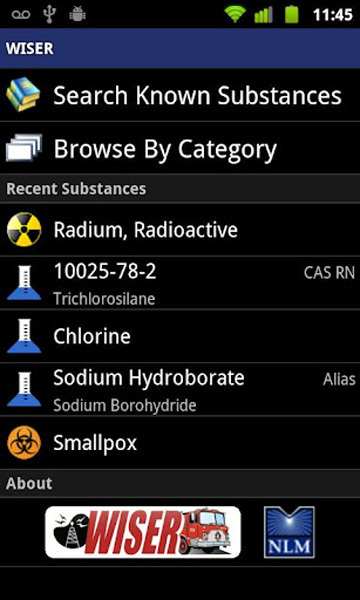
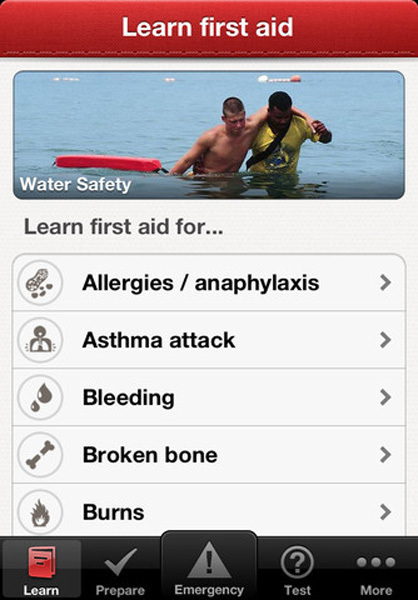
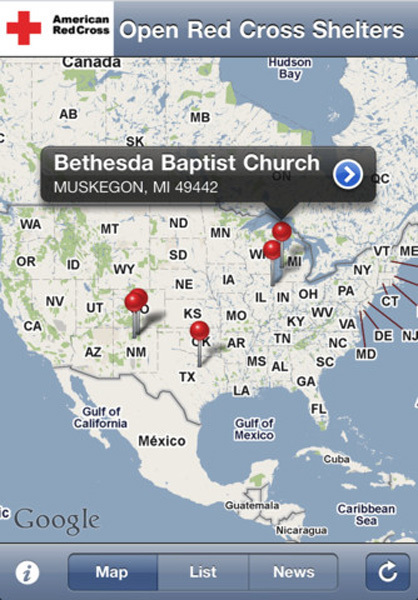




Leave a Reply
You must be logged in to post a comment.